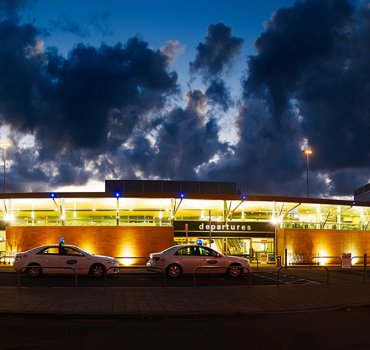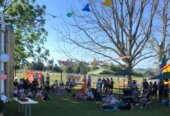

The draft 30-year Waipā transport strategy pays little recognition to the importance of Hamilton Airport and Mystery Creek Events Centre, the two organisations have told the district council.
A joint submission between the airport, Mystery Creek and Titanium Park says the airport is an important regional transport hub, an economic growth driver with its influence extended beyond the Waipā district.
“Despite this, the strategy provides limited recognition to the importance of the airport, its surrounding industrial node or Mystery Creek,” says the submission presented to council’s Strategic Planning and Policy committee this week.

Kaipaki Road headed towards Mystery Creek
Council received 170 written submissions and one verbal to its controversial draft transport plan.
Nearly half came from Cambridge residents with many calling for a third bridge over the Waikato River, others asking for more public transport options including on-demand buses and others saying too much had been spent on cycleways.
Three submitters, including the joint one, made presentations to the committee. The others were Cambridge Chamber of Commerce and Bike Waikato.
In her report, strategic planner Rachel Algar said the council recognised the need for a culture shift to look at the way people moved about.
The Waikato Regional Transportation Model was used to understand future road congestion, but many submitters said the data was out of date.
The joint airport/Mystery Creek submission said given the strategy signalled a third bridge for Cambridge would be investigated, the council would also need to look at the form and function of Kaipaki and Mystery Creek roads and their connections to state highways three and 21.
“Without thinking about the network to which that bridge connects and how the users of that bridge will travel to and from Hamilton/Te Awamutu would be short sighted.”
Kaipaki and Mystery Creek roads were already being used as an alternative route for Cambridge residents travelling to and from Hamilton.
The strategy only presented walking, wheeling and cycling options in Cambridge and Te Awamutu and showed no forward thinking around connectivity on the southern side of the Waikato River.

“It also does not consider how the river itself could be used as a multi-modal transport corridor,” the joint submission says.
“The lack of public transport between the airport and Hamilton, let alone the regional centres, is short-sighted and needs to be rectified.
“The airport environ is a significant investment for the district and should be afforded the same public transport opportunities as both Te Awamutu and Cambridge,” the submission says.
Looking at future proofing rail connections is also ignored as is the importance of Southern Links from Hamilton, via Peacockes, the airport and through to Tamahere to meet up with SH1.
“With the strategy not signalling its importance to the growth of the southern Metro Corridor … (this) represents an intergenerational loss of opportunity for the region.”
Support for the airport’s submission has come from its major shareholder, Hamilton City Council. In the submission, Hamilton chief executive Lance Verboort says the draft strategy focuses on Cambridge and Te Awamutu and should give more weight to the airport precinct.
“Waipā District Council (should) consider giving a much stronger spatial focus to this area and (we) would welcome the opportunity to continue working collaboratively with Waipā to address this complex matter.”
Read: Road issue ramped up
Changes to the draft transport strategy made because of the submissions include:
- Update the strategy to reflect the role of the airport and Mystery Creek
- Work with Waikato Regional Council and Hamilton on future passenger transport, walking and cycling connections to the airport and Mystery Creek
- Investigate opportunities to link existing cycleways (e.g. Te Awa, Pirongia – Lake Ngāroto – Te Awamutu) to create connected networks across key towns and across the district.
- Look at ways to make changes to parking in Cambridge’s main street which would create vibrant and attractive people spaces less dominated by cars
- Investigate walking and cycling connections across the Waikato River.
- Participate in Southern Links planning to ensure coordination of infrastructure and wider network planning.
- Investigate opportunities to link rural communities with safe walking and cycling corridors.








